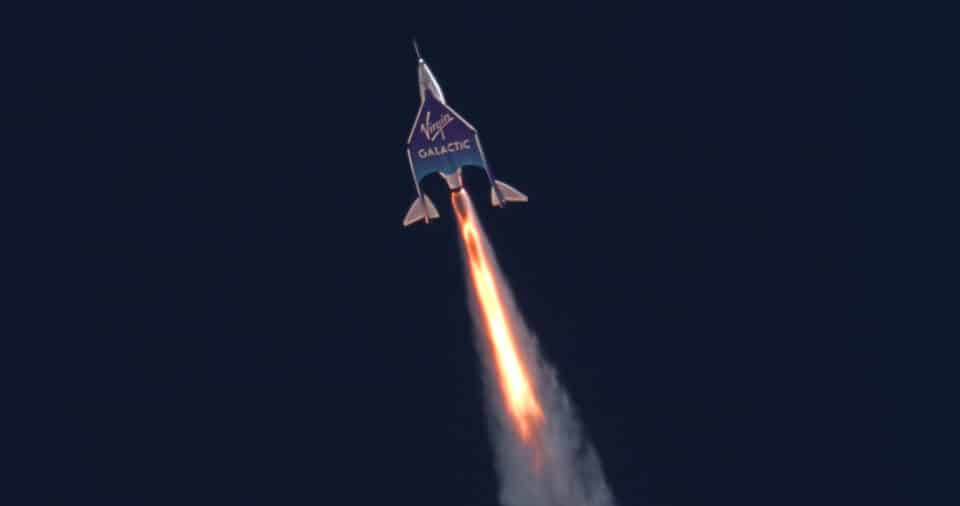Aerospace
Virgin Galactic announces start of commercial spaceflight service

A commercial space flight service has officially begun, according to Virgin Galactic. Galactic 01’s first commercial revenue-generating mission flight window opens on June 27, 2023, with options to fly through June 30.
Virgin Galactic unveils new spaceship 2 ..!(Opens in a new browser tab)
After completing the Unity 25 voyage, as well as any necessary follow-up studies and vehicle inspections, Virgin Galactic’s crew and vehicles are prepared to launch their first paying clients into space. Three crew members from the Italian Air Force and the National Research Council of Italy will travel on Galactic 01 to undertake microgravity research. The value and strength of Virgin Galactic’s special suborbital science lab will be demonstrated by carrying scientific payloads on its first-ever commercial mission.
Virgin Galactic’s Richard Branson says he will be in space in six months(Opens in a new browser tab)
According to Virgin Galactic CEO Michael Colglazier, “We are launching the first commercial spaceline for Earth with two dynamic products – our scientific research and private astronaut space missions.” “Innovation, tenacity, and a dedication to providing an unequaled and genuinely transformative customer experience have driven this next exciting chapter for Virgin Galactic,” the company said.
The second commercial spaceflight, ‘Galactic 02,’ will follow in early August 2023, with monthly spaceflights expected by Virgin Galactic thereafter.
Livestreams for Galactic 01 and Galactic 02 will be available on virgingalactic.com, and information regarding the crew and manifest for the inaugural flights will be made public ahead of each voyage.

Aerospace
Boeing Transfers Rocket Stage to NASA, Paving Way for Human Moon Mission

Boeing has achieved a significant milestone by providing NASA with the second core stage of the Space Launch System (SLS) rocket.
This crucial component, crafted at NASA’s Michoud Assembly Facility (MAF), is set to propel the Artemis II crew into lunar orbit, marking humanity’s return to deep space after a 50-year hiatus.
The monumental Boeing-built rocket stage, the largest element of the Artemis II mission, will embark on a journey aboard the Pegasus barge, traveling 900 miles to NASA’s Kennedy Space Center.
Comparison of two legendary aircraft B777x vs B747 aircraft:Click here
Upon arrival, it will be meticulously integrated with other essential Artemis II components, including the upper stage, solid rocket boosters, and NASA’s Orion spacecraft within the iconic Vehicle Assembly Building. This intricate integration process is a vital step toward the eagerly anticipated Artemis II launch, slated for 2025.
“Boeing-built products helped land humankind on the moon in 1969, and we’re proud to continue that legacy through the Artemis generation,” remarked Dave Dutcher, vice president and program manager for Boeing’s SLS program. “Together, with NASA and our industry partners and suppliers, we are building the world’s most capable rocket and paving the way to deep space through America’s rocket factory in New Orleans.”
NASA, Lockheed Martin Reveal X-59 Quiet Supersonic Aircraft:Click here
The delivery of Core Stage 2 marks a significant achievement in the evolution of the SLS rocket. Towering over 200 feet and powered by four RS-25 engines, this core stage, coupled with two solid-fueled booster rockets, will generate a staggering 8.8 million pounds of thrust. This immense power is crucial to launching Artemis II and future missions into the vast expanse of space.
The SLS rocket stands unparalleled in its capability to transport both crew and substantial cargo to the moon and beyond in a single launch. Its extraordinary capacity will facilitate the delivery of human-rated spacecraft, habitats, and scientific missions to destinations including the moon and Mars, ushering in a new era of space exploration.
-

 Travel1 week ago
Travel1 week agoAir India to Expand US Operations with Three New Routes After a Decade
-

 Travel2 weeks ago
Travel2 weeks agoWhy We Should Avoid These Stamps in a Passport
-

 Airlines1 month ago
Airlines1 month agoInvestigations Reveal Fake Chinese Titanium in Boeing and Airbus Jets
-

 Tech4 weeks ago
Tech4 weeks agoChina’s CATL Plans 1,800-Mile Electric Plane Launch by 2027
-

 Airport3 days ago
Airport3 days agoTop 10 Largest Airports in the World by Size
-

 Aerospace4 weeks ago
Aerospace4 weeks agoChina’s Fighter Jets Turn Wings into Autonomous Drones
-

 Airlines4 days ago
Airlines4 days agoAir India Rolls Out A350s for Delhi-New York JFK and Newark Routes
-

 Defence3 weeks ago
Defence3 weeks agoBoeing Enhances Chinook with New Engines and Block II Upgrades at $96 Million







